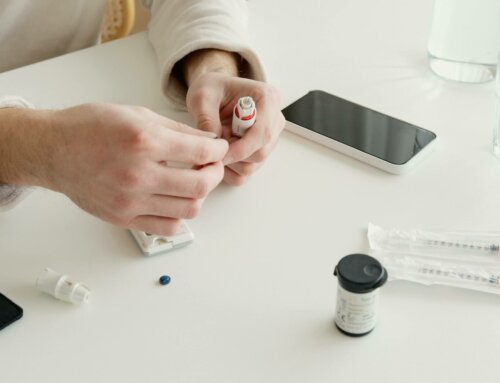Feet carry us where we need to go and take on pressure supporting our body weight. Proper foot care is essential for people with diabetes. Poor foot care can lead to serious health problems and even possible amputation. Foot care basics help ward off these health issues.
- Check your own feet everyday using a mirror. Search for blisters, abrasions and skin changes. Look at the bottoms of your feet and between toes. Never pop a sore or blister. Instead, apply a bandage. If it does not seem to be healing consult with a podiatrist.
- Take off your shoes and socks every time you go to a doctor. Physicians check your feet for poor circulation, numbness, pain, calluses, ingrown toenails, blackening, redness or other discoloration of skin, infection, hammer toes, ulcers and bunions. Early detection is crucial.
- Have your feet measured and wear the proper shoe size. Try to measure your feet at the end of the day when they are somewhat swollen and at their biggest size. Wear comfortable shoes everywhere including sneakers, slippers, diabetic shoes and pool shoes. Avoid tight shoes and consider high heels only for special occasions.
- Never go barefoot. Protect your feet from injury and bacteria by wearing shoes or slippers.
- Often people with diabetes visit a podiatrist at least once or twice a year for professional foot care. See if you are entitled through insurance to more frequent visits.
- Proper foot care makes pedicures appealing but be careful where you go. The facility should be clean to help avoid infections. Licensed technicians should be employed. Ask about sterilization and licensing before getting a pedicure. Consider purchasing your own set of tools or just going for a lotion massage and polish change instead of a whole pedicure.
- People with diabetes should not smoke. Smoking leads to heart disease, high blood pressure and poor circulation. With poor circulation, the risk of foot or leg amputation increases.
- Wash your feet carefully everyday with mild soap and warm water. Pat dry and dry between the toes. Shake out shoes before putting them on. Change your shoes frequently to let them dry out. Keeping your feet clean and dry is a top priority.
- After showering, carefully dry your feet. Apply lotion to the tops and bottoms of your feet to prevent dryness, avoiding the areas between your toes. Use powder between toes to prevent fungus and cracking.
- Be careful of heating pads, hot soaks and whirlpools, especially if you are unsure of how they are sterilized or the temperature. Bacteria in these environments lead to serious and possibly life-threatening health problems. Extreme heat can cause a possible burn.
- Proper nail trimming is an essential part of diabetic foot care. After bathing, cut soft toenails straight across then smooth with an emery board. Do not cut into the corners of toes. Podiatrists also cut toenails and it may be covered under your medical insurance.
- High blood sugar is linked with poor circulation and nerve damage. It could impact the blood flow to your feet as well as creating nerve damage which may cause numbness, pain, tingling or sensitivity. This is often referred to as diabetic neuropathy. To relieve the related itching and pain temporarily, use a special neuropathy cream. Visit your doctor to have your feet examined.
Proper foot care keeps you moving forward. Avoid health problems and possible amputation by taking care of your feet everyday.












Leave A Comment